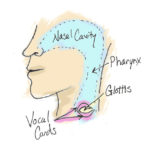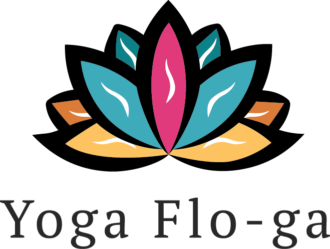Sitting in a yoga class, and the instructor tells you to engage your Ujjayi Breath, suddenly everyone around you sounds like they’re Vader and you have no idea what is going on…

Sound familiar?
This week I want to explain and expand on Ujjayi breathing, it’s uses and benefits as well as how to actually do it.

Ujjayi = victorious/sound breath.
It is accomplished by restricting the flow of air in the throat which creates a sound; often likened to waves/ the ocean.

 The part of the throat that is restricted is called the Glottis – this is where the vocal chords live. When we whisper, we restrict the back of the throat.
The part of the throat that is restricted is called the Glottis – this is where the vocal chords live. When we whisper, we restrict the back of the throat.
The same principles are in place for Ujjayi breath. Keeping the breath flowing freely through the nose, and the mouth closed but relaxed, try and close the throat slightly.
Personally I used the trick of trying to breathe through my mouth with it still closed to get used to the feeling of constricting my throat. This is something to play around with until you find something that works for you. Once you have the knack of it, it will come naturally.
Keeping the mouth relaxed allows the breath to echo in your mouth as it flows in and out and intestifies the Ujjayi Sound, which is really helpful for being able to monitor your breathing during practice.
.

Vinyasa flow yoga is based on the linking of breath to movement. Therefore, having a vocal breath makes it easier to link the two.
Some practictioners say that a normal breath is better during an Asana/physical practice and Sound breath should be reserved for Pranayama practice, however there are many benefits of using the Sound breath during an Asana practice
- Restricting the flow of air takes concentration, which helps to keep our minds focused on our bodies. Allowing us to remain in poses for longer and less likely to be affected by distractions, keeping us grounded during our practice.
- Builds endurance, with the noise working as a sound meditation, maintaining the rhythm and flow of the class
- Regulates the heating of the body by cooling the air flowing into the lungs, while generating body heat warming the body from the core out in preparation for Asana. Heat makes stretching safter and helps organs to remove toxins
- Assists with releasing tension and tight areas in the body, reduces pain from headaches, relieves sinus pressure, decreases phlegm and strengthens the nervous and digestive systems
- Indicates when we push too far too fast. The breath should remain even and smooth. It helps us to practice honesty, taking a step back and letting go of ego

